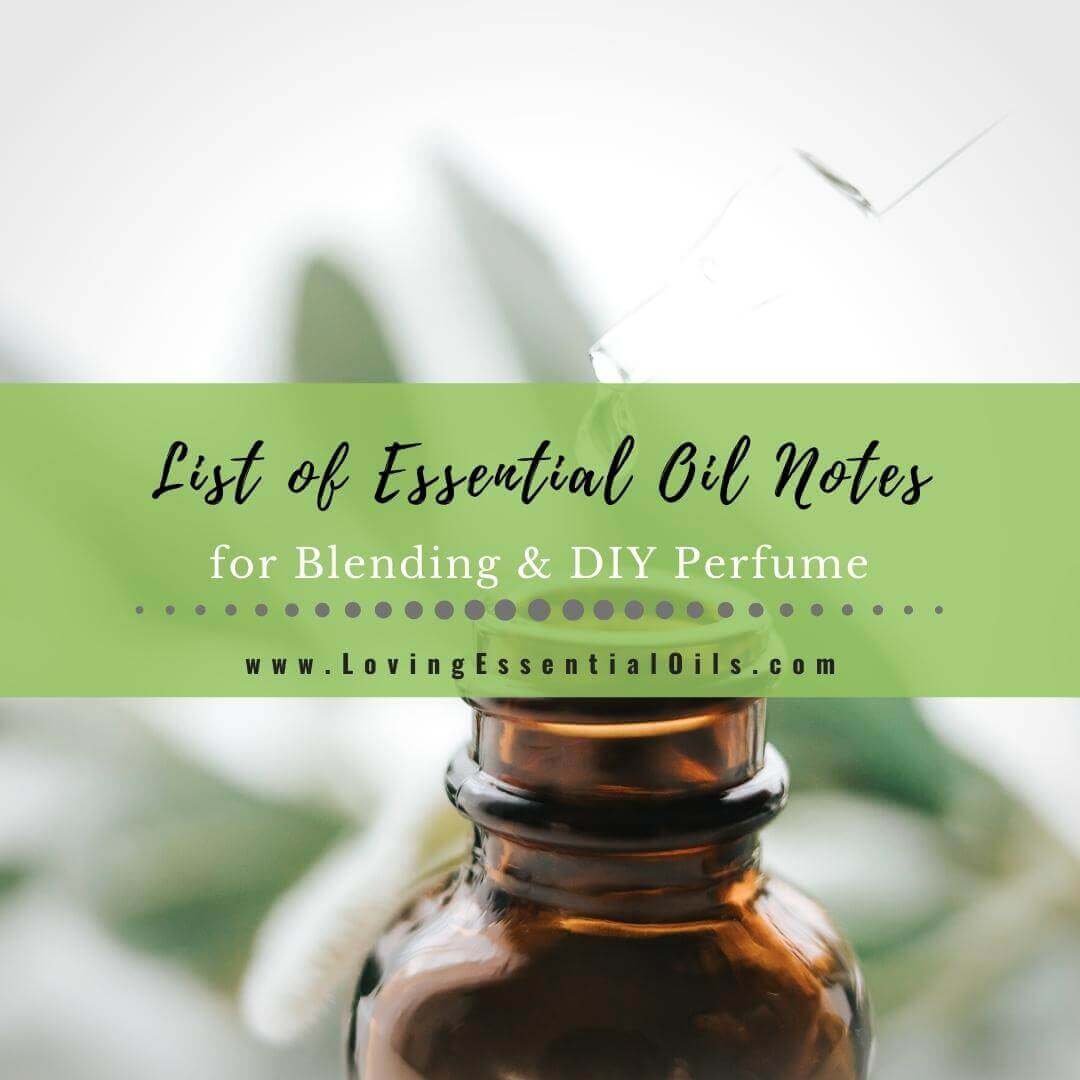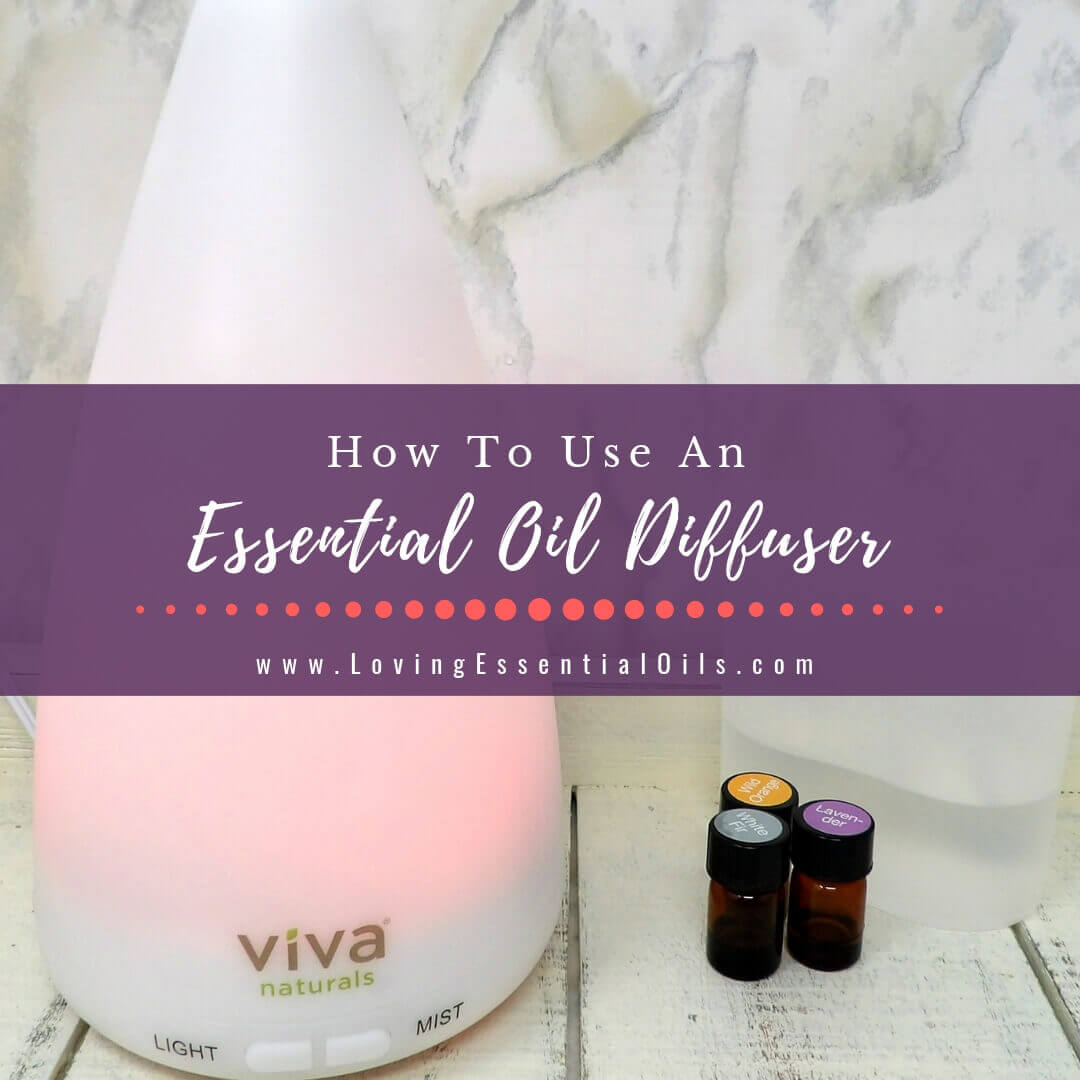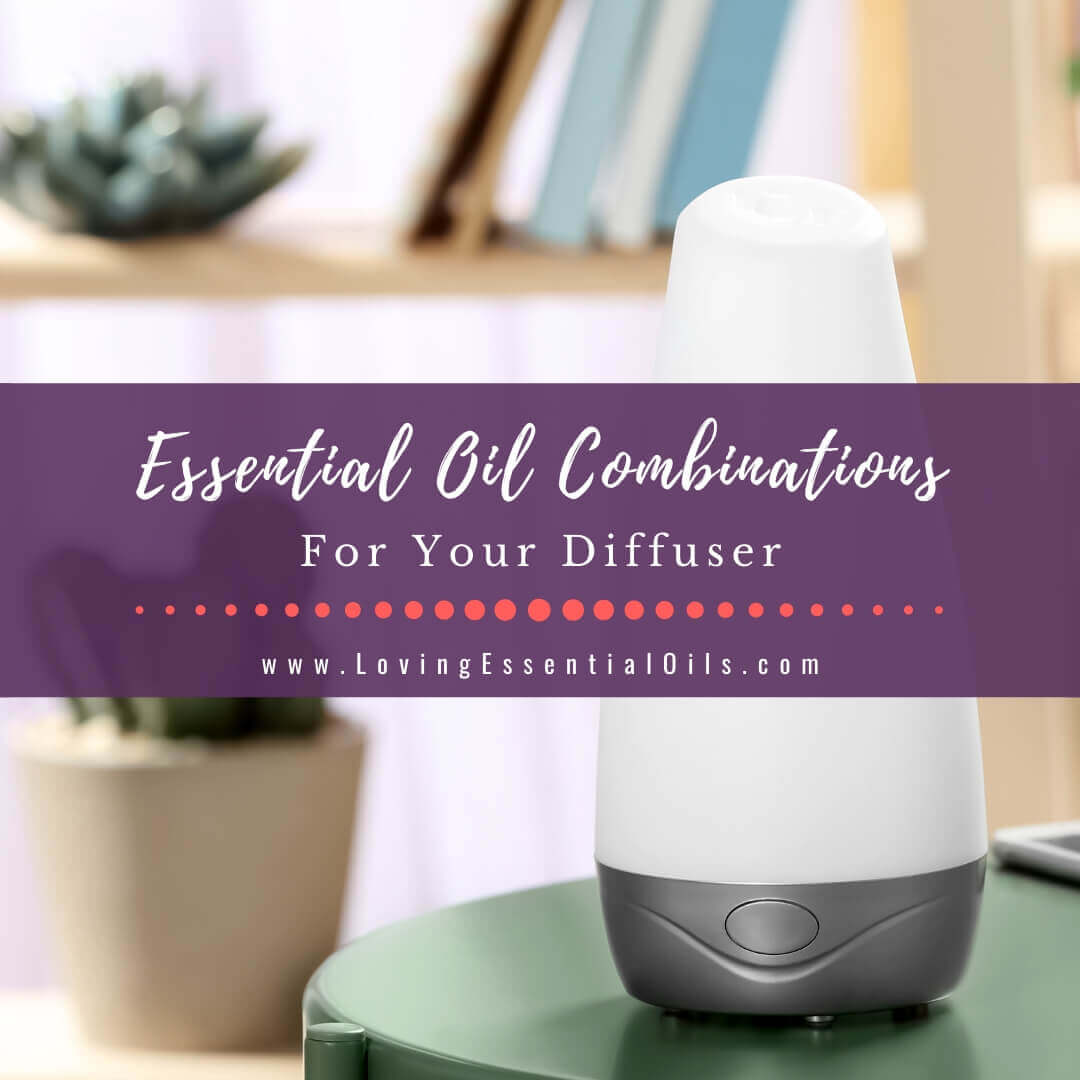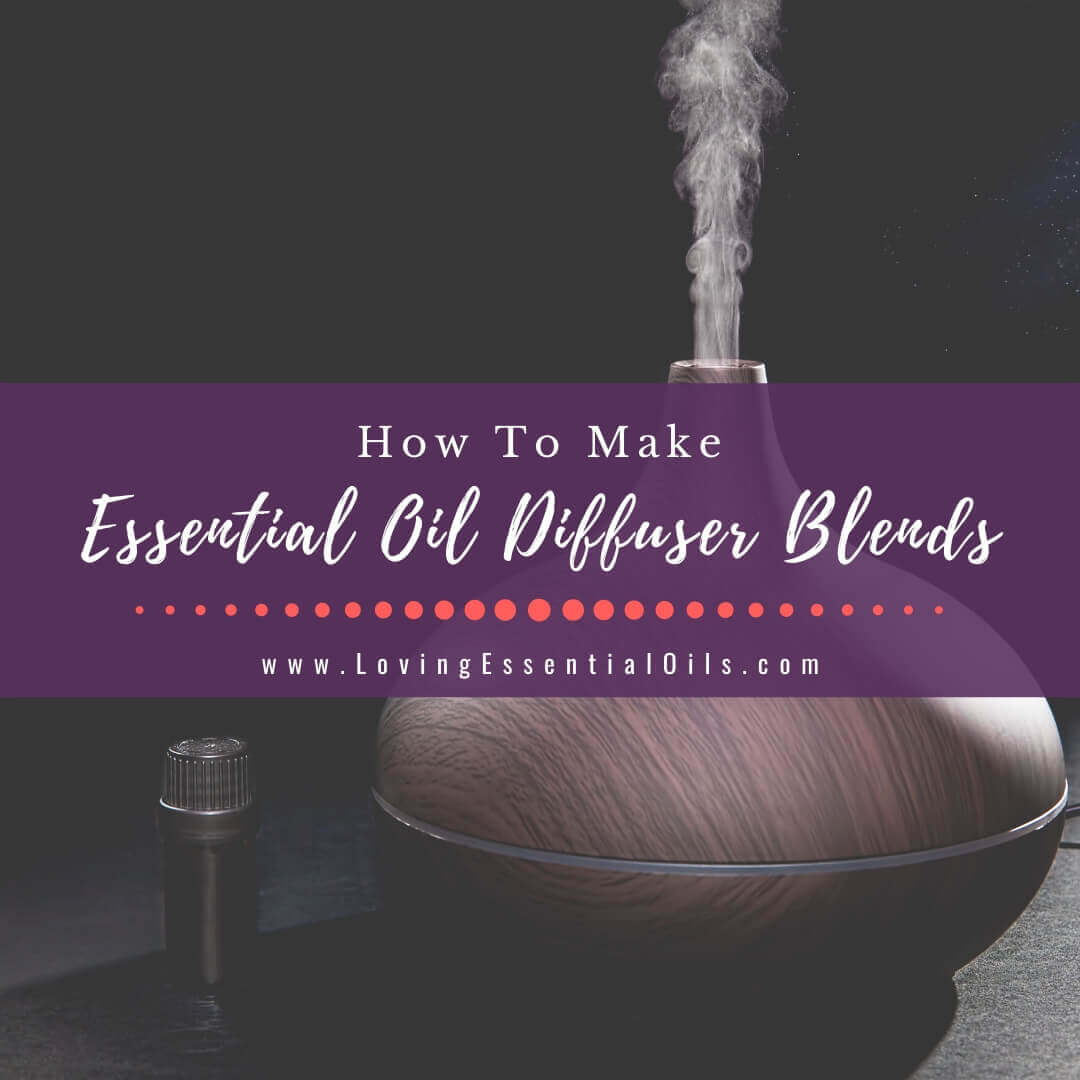Table of Contents
Are you looking to create your own essential oil blends, but aren't sure where to start? This list of essential oil notes for blending can help! Each oil has a unique scent and flavor, so it's important to consider the properties of each oil when creating a blend.
It doesn't have to be hard! With a little bit of practice, you'll be able to create custom blends that suit your needs perfectly. Ready to get started? First let's look at what supplies can be used when it comes to blending essential oils.
Essential Oil Supplies for Blending and DIY Recipes
When you first start blending essential oils and making DIY recipes, knowing what supplies you need can be challenging. But don't worry—I'm here to help! In this section, I'll list the essential supplies you may need for blending essential oils and using them for aromatherapy.
Plus, I'll give you a few tips on how to use them. So read on and get ready to start blending like a pro!
Aromatherapy Diffusers:
Used to put microscopic droplets of essential oils into the air for aromatic use. While the designs of essential oil diffusers are endless, they generally either require a bottle of essential oil to be attached to the diffuser itself or drops of essential oils to be added to water in the diffuser.
Read more about Diffusing Essential Oils
Roller Bottles:
These are glass bottles that have a roller top on them that are great for using essential oils topically. You can dilute your essential oil or blend with the carrier oil of your choice and have it ready for use when using these bottles.
Read more about DIY Essential Oil Recipes
Dark Glass Bottles:
Useful for storing essential oils or blends. The dark glass helps keep the oil from being exposed to light. These are great for creating new essential oil blends in.
Glass Bowls:
Used for mixing ingredients in blending projects or soaking wicks from personal inhalers.
Stir Rods:
Used for stirring essential oil blends and ingredients together. You can purchase these in glass, stainless steel, or wooden form – however, keep in mind, the wooden ones are for single use while the glass and stainless steel can be washed and reused.
Aromatherapy Inhalers:
Great for making personal inhalation blends for use when out and about or somewhere where diffusing is not an option. These come in 4 parts: the cap, the base, the wick, and a small end cap that snaps on the bottom.
To use, simply apply your essential oils directly to the wick and assemble the inhaler. Alternatively, you can mix your essential oils in a glass bowl and add the wick to the bowl to suck up the oils.
Glass Measuring Cups:
Useful in measuring out ingredients for blending projects. These can also be used as a makeshift double boiler.
Double Boiler:
Small glass or stainless-steel pan insert for melting butters and waxes in essential oil blending projects. These keep the ingredients from being directly heated on the stove or hot plate to keep the ingredients stable.
Here is a photo of making a double boiler at home. In the photo, I am melting beeswax using the double boiler method. I used a glass pyrex measuring cup and placed the measuring cup into regular pan with gently boiling water.
When done be sure to use a pot holder to remove the glass cup as it will be hot, so would a metal bowl if that is what you are using instead.
Perfume Strips:
Small strips of absorbent paper used to experience the scents of essential oils. They can help you to smell how essential oils may blend together. These strips are also a great way to introduce your clients, friends, or family to the scents of essential oils they could benefit from as well as the different scent combinations.
Essential Oil Blending for Beginners
Blending is an art and a science, one that there are many different approaches to achieve. While it’s not within the scope of this blog post to dive into all the different approaches there are to blending by notes. We’re going to talk a little bit about the Individual Prescription (IP) and The Individual Prescription was a theory brought about by Margeurite Maury.
Maury believed and taught that essential oils were not a one-size-fits-all modality but instead worked better when they were personalized to the individual who would be using them.
How that translates to blending practices is allowing whoever you’re blending for to be a part of choosing the essential oils that’s going to go into the blend and also taking the whole person into account when deciding on oils. The person you’re blending for should ultimately like the scent of the blend as this will help with keeping them using the oil as well.
Essential Oil Chemistry for Blending Oils
In this next section, we’re going to review essential oil chemistry and therapeutic properties. Remember, it’s the chemistry that gives the essential oils their therapeutic actions, and it’s the chemistry that determines what is appropriate for use when blending.
Monoterpenes
Monoterpenes are a part of almost every essential oil. They are the least toxic chemical family and are stimulating, great antiseptics and antioxidants, and have analgesic properties.
Essential Oils High in Monoterpenes:
- Frankincense, Atlas Cedarwood, Bergamot, Lemon, Grapefruit, Cypress, Juniper Berry, Naiouli, Rosemary, and Black Pepper
Sesquiterpenes
Sesquiterprenes are anti-inflammatory, calming, and some have sedative, anti-viral, anti-spasmodic, and analgesic properties.
Essential Oils High in Sesquiterpenes:
- Black Pepper, Carrot Seed, Virginian Cedarwood, Clary Sage, Clove, Spikenard, Patchouli, and Vetiver.
Alcohols
Alcohols are anti-infectious, antiviral, antibacterial, stimulating, energizing, and diuretic.
Essential Oils High in Alcohols:
- Eucalyptus Radiata, Petitgrain, Peppermint, Ravensara, Tea Tree, Rose
Aldehydes
Oils high in aldehydes generally have a very strong aroma. They are calming and sedative to the nervous system, anti-inflammatory, antiviral, and vasodilators. It’s important to properly dilute essential oils high in aldehydes because they can be irritating to the skin when used improperly.
Essential Oils High in Aldehydes:
- Melissa, Lemongrass, Citronella, Eucalyptus citriodora
Ketones
Oils high in ketones are great for wound healing, are mucolytic, and sedative. Some oils in this group are also anti-coagulant, analgesic, stimulating, decongesting, and anti-inflammatory. Oils high in ketones should be used with caution, especially during pregnancy.
Essential Oils High in Ketones:
- Eucalyptus globulus, Rosemary verbena, Eucalyptus Dives, Hyssop, Sage
Esters
Esters are antifungal, anti-inflammatory, anti-spasmodic, and calming. They are very gentle in their actions and are the most friendly of all the groups.
Essential Oils High in Esters:
- Lavender, Clary Sage, Roman Chamomile, Bergamot
Phenols
Phenols are the most hazardous of all the chemical families. Oils in this group are strongly antiseptic and immune stimulants. They can be toxic to the liver or cause skin irritations. Oils in this group should be avoided in pregnancy and breast feeding.
Essential Oils High in Phenols:
- Clove, Cinnamon, Oregano, Mountain Savory
Essential Oil Blending by Perfume Notes
Blending by notes is another way in which we can blend essential oils. In note theory, oils are separated into base, middle, and top notes. This is generally based off of their volatility.
Top notes will evaporate quickly, but your base notes take longer to evaporate and thus hold the blend together while keeping the scent from dissipating quickly.
The top note is what you first experience when smelling you blend and eventually the scent scape leads you through your middle and base notes.
A blend, according to note theory, will consist of the following:
20-30% of blend in top notes
40-80% of the blend in middle notes
10-25% of the blend in base notes
List of Essential Oil Notes
Check out these essential oils and their corresponding notes! The following is a list of essential oil notes organized into oils considered to be top, middle, and base notes.
Essential Oil Top Notes
The top essential oil notes are the scents you smell when you first apply the oil to your skin. They create an initial impression and can help you determine which oils are right for you.
- Bergamot
- Clove
- Cinnamon
- Grapefruit
- Lemon
- Lemongrass
- Lime
- Mandarin
- Neroli
- Petitgrain
- Sweet Orange
- Peppermint
- Thyme
Essential Oil Middle Notes
The middle essential oil notes are an important part of any blend, providing depth and complexity. They can be used to adjust a blend's scent or create a specific mood or effect.
- German Chamomile
- Cardamom
- Geranium
- Ginger
- Lavender
- Sweet Marjoram
- Palmarosa
- Pine
- Rosemary
- Ylang ylang
Essential Oil Base Notes
Base essential oil notes give essential oil blends their long-lasting aromas, and they can provide various benefits depending on the oil.
- Carrot Seed
- Cedarwood
- Cistus
- Clary Sage
- Frankincense
- Myrrh
- Patchouli
- Peru Balsam
- Sandalwood
- Spikenard
- Vetiver
Essential Oil Scent Profiles
Not only can essential oils be classified based on the intensity of their odor and their evaporation rate, but they can also be classified by the scent they give off. All essential oils have unique scents. Some essential oils are fruity, while others are pretty earthy.
Below is a basic list of essential oils that fall into the different scent categories.
When you’re blending for aromatic purposes only, knowing which oils have which scents can go a long way in helping you determine what oils will be pleasing to smell – which is the ultimate goal of blending for aromatic purposes.
Floral Essential Oils
Many of the oils in the floral family are great for promoting a sense of calm, anxiety, depression, insomnia, and have great affinities for the skin.
- Lavender
- Ylang ylang
- Rose
- Jasmine
- Roman Chamomile
- Melissa
- Neroli
Herbaceous Essential Oils
Many herbaceous oils are great for fighting off germs and promoting wellness. They can be used to boost immunity and help you recover in times of illness.
- Basil
- Marjoram
- Thyme
- Oregano
- Marjoram
- Coriander
- Cilantro
- Clary Sage
Spicy Essential Oils
Spicy oils have an affinity for the digestive system and for creating a sense of warmth, which can ease sore and strained muscles and joints.
- Black Pepper
- Cinnamon
- Cassia
- Pink Pepper
- Ginger
- Nutmeg
Minty Essential Oils
Minty oils are great, refreshing essential oils that can increase energy and alertness, battle fatigue, increase concentration, and can cool hot, inflamed skin or joints. Be sure to dilute essential oils before applying to skin.
- Peppermint
- Spearmint
- Corn Mint
- Bergamot Mint
- Wintergreen
- Rosemary
Woody and Earthy Essential Oils
Earthy oils are great for grounding – they can be used to instill a sense of calmness, promote relaxation and sleep, and calm anxious thoughts.
- Spikenard
- Tea Tree
- Vetiver
- Cypress
- Cedarwood
- Sandalwood
- Ravintsara
- Pine
- Spruce
- Copaiba
Fruity Essential Oils
Fruity oils are bright and uplifting. They make an excellent option for increasing energy and alertness, calming anxious thoughts, promoting a sense of happiness, and make great skin treatments for things such as dark spots, acne, and oil production.
- Orange
- Lime
- Lemon
- Grapefruit
- Bergamot
- Mandarin
- Green Mandarin
- Lemongrass
- May Chang
- Tangerine
Essential Oil Dilution
Dilution is an important part of using essential oils safely, effectively, and ethically. Dilution decreases the risk of skin sensitivity or adverse reactions when using essential oils topically.
Also, when you dilute your oils in a carrier oil (more on these a little later) you don’t need to use as much essential oil, making it more cost effective as well.
When working with pregnant women and babies, it’s even more important due to the vulnerability and fragility involved with new life. While using the lowest dilution possible to get the results you’re after is always best.
Below is a dilution chart that you can use to ensure your blending safely.
How to Blend Essential Oils Effectively
If you're like me, you probably enjoy using essential oils to improve your wellness. Here is how to create your own essential oil blends depending on your needs. We share how to blend essential oils effectively so you can get the most out of them.
Essential oil blending is easier than you might think — and the benefits are worth it! Here are 8 tips and tricks for mixing your essential oils together:
1. Blend Drop By Drop
Start by blending one drop at a time. This will allow you better control over the scent of the blend. Remember, you can always add more drops to a blend, you can’t take them away.
Experiment with different ratios to create the scent you are looking for. For example, you might want to use more lavender oil in your blend than rose oil.
2. Choose Your Carrier Oil Wisely
If you are creating a blend for topical use, you must choose a carrier oil. Your choice of carrier oil can play a big part in the therapeutic enhancement of your blend. Think about the benefits it offers, any scent it may have, and whether it will compete with your essential oil blend.
3. Adding Essential Oils for Emotions
When creating a blend for a physical ailment, always add an oil to address your emotional status or the person you’re blending for. No matter what ailment you’re dealing with, there’s always an element of stress that goes along with it. Missing the chance to address the emotional effects is a disservice to the person you’re blending for (or for yourself!).
4. Limit the Number of Oils in the Blend
Try to keep blends to no more than 3 to 5 essential oils (3 is actually a great number to use). Using more essential oils than this ends up diluting the chemical constituents of the essential oils you’re using, which can lead to a less effective blend.
5. Label Your Blend
Be sure to label every blend you make. Keep notes on exactly what you used in the blend and how much you used. This is important if you ever want to remake a blend for yourself or someone else.
6. Change Up Your Oils
Don’t be afraid to change oils in your blends from time to time. Adding new oils could lend a whole new level of efficacy to your blending practice.
7. Know Your Essential Oils
Don’t blend with oils you aren’t personally familiar with. Before adding an essential oil to a blend, you should be familiar with the oil’s therapeutic properties and safety considerations.
8. Have Fun With Your Blends
Yes, you can have fun! Life is stressful enough; don't let blending essential oils ruin your day.
FAQs
What are essential oil notes?
Essential oil notes refer to the classification of essential oils based on their volatility and aroma. They are categorized into top, middle, and base notes, each contributing to an essential oil blend's overall fragrance profile and therapeutic properties.
How are top notes used in essential oils?
Top notes in essential oils are the first scents perceived and tend to be light, fresh, and uplifting. They evaporate quickly and often include oils like lemon, clove, and peppermint, which are used to energize and refresh.
What role do middle notes play in essential oil blends?
Middle notes in essential oil blends provide balance and harmony, often described as the "heart" of the blend. They have a moderate evaporation rate and include oils such as lavender, chamomile, and rosemary, which offer calming and soothing effects.
Why are base notes important in essential oil formulations?
Base notes are crucial for adding depth and longevity to essential oil blends. These oils evaporate slowly and often have rich, grounding aromas, such as sandalwood, patchouli, and cedarwood, which help to anchor the blend and provide a lasting scent.
How do essential oil notes affect aromatherapy practices?
In aromatherapy, essential oil notes are necessary for creating balanced and effective blends. Each note contributes distinct therapeutic properties, and when combined, they can enhance emotional well-being, relieve stress, and promote relaxation or invigoration.
Can combining different essential oil notes enhance their benefits?
Yes, combining different essential oil notes can enhance their therapeutic benefits by creating a synergistic effect. You can tailor blends to address specific physical, emotional, and mental health needs by carefully blending top, middle, and base notes.
Share on Pinterest







